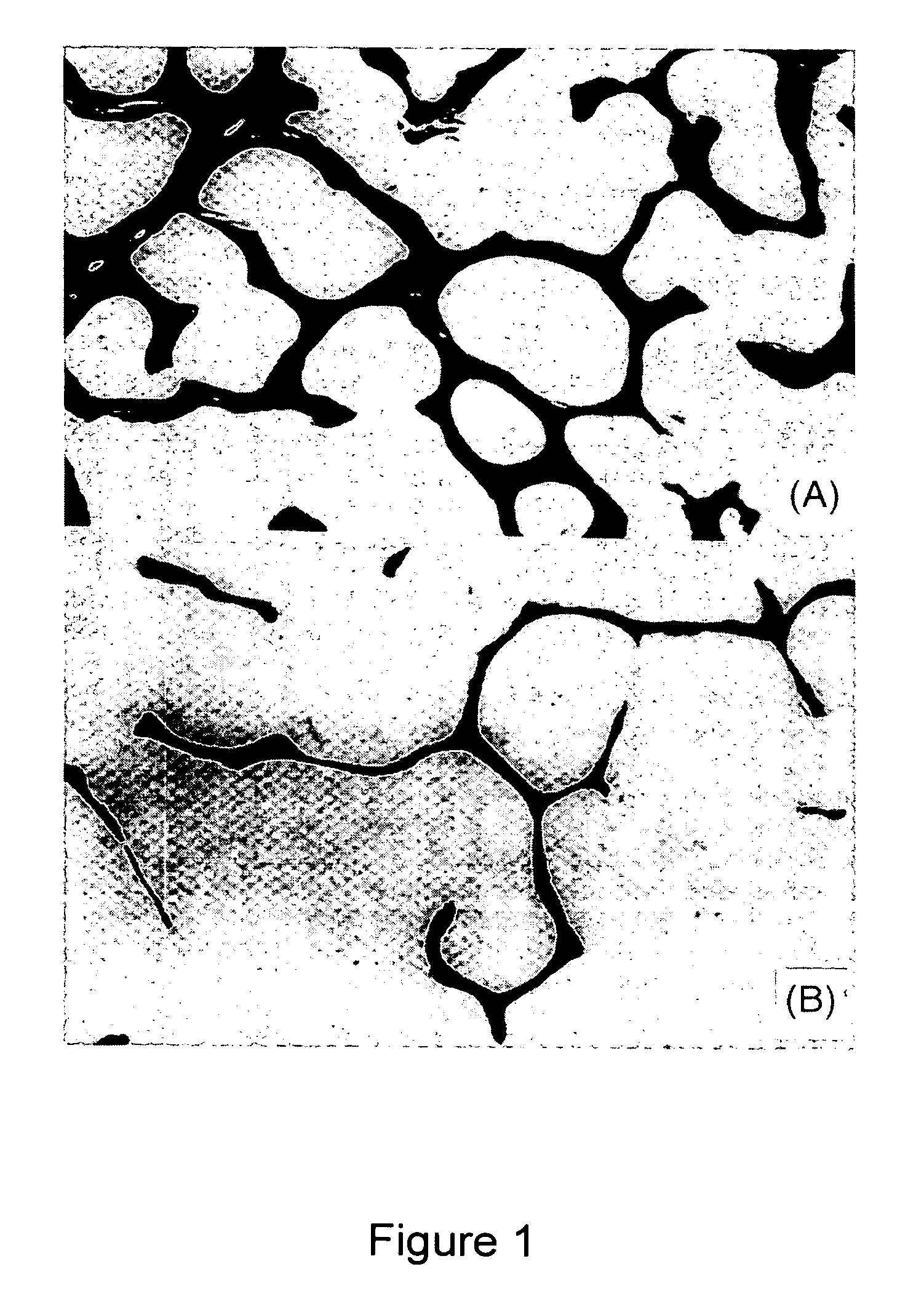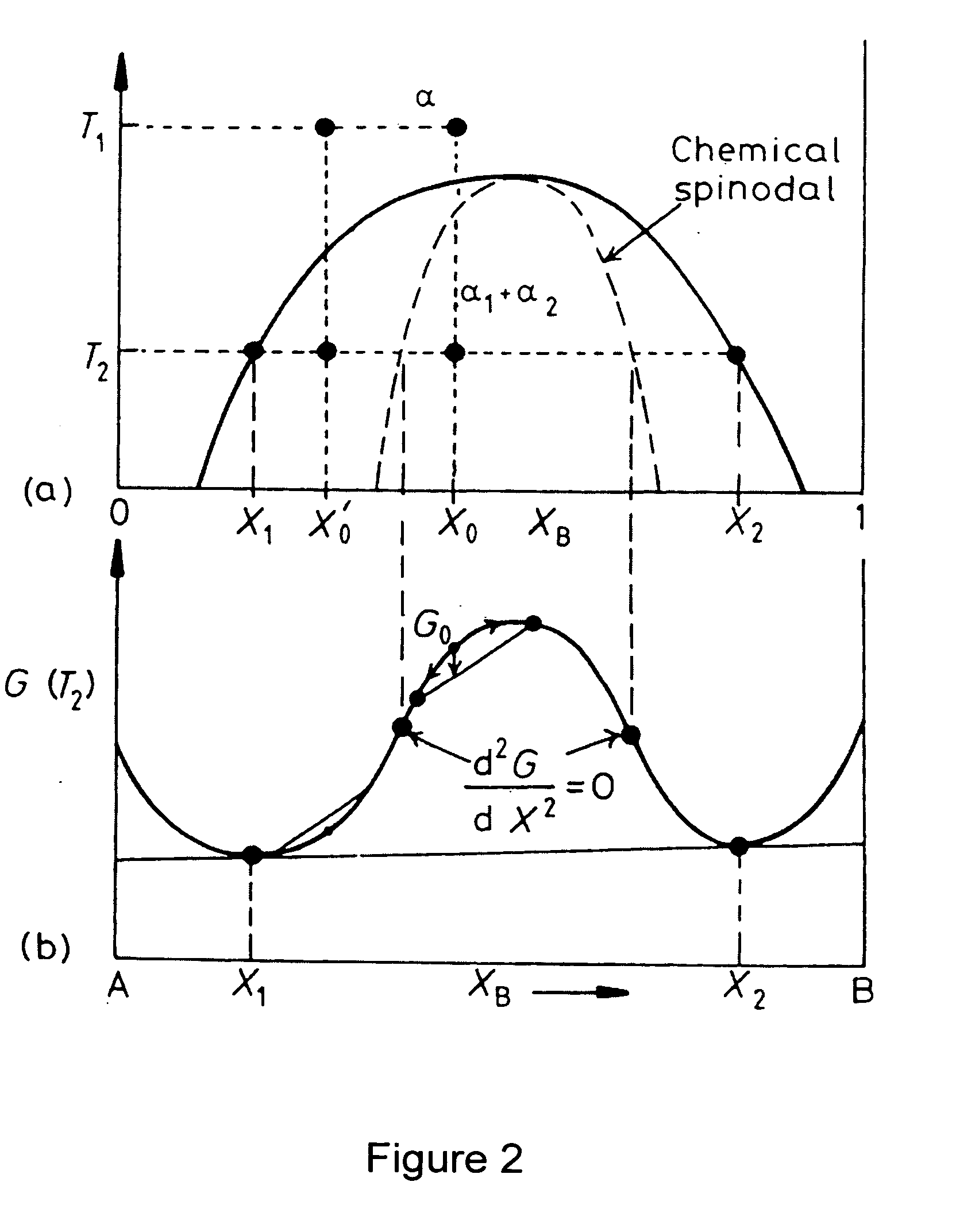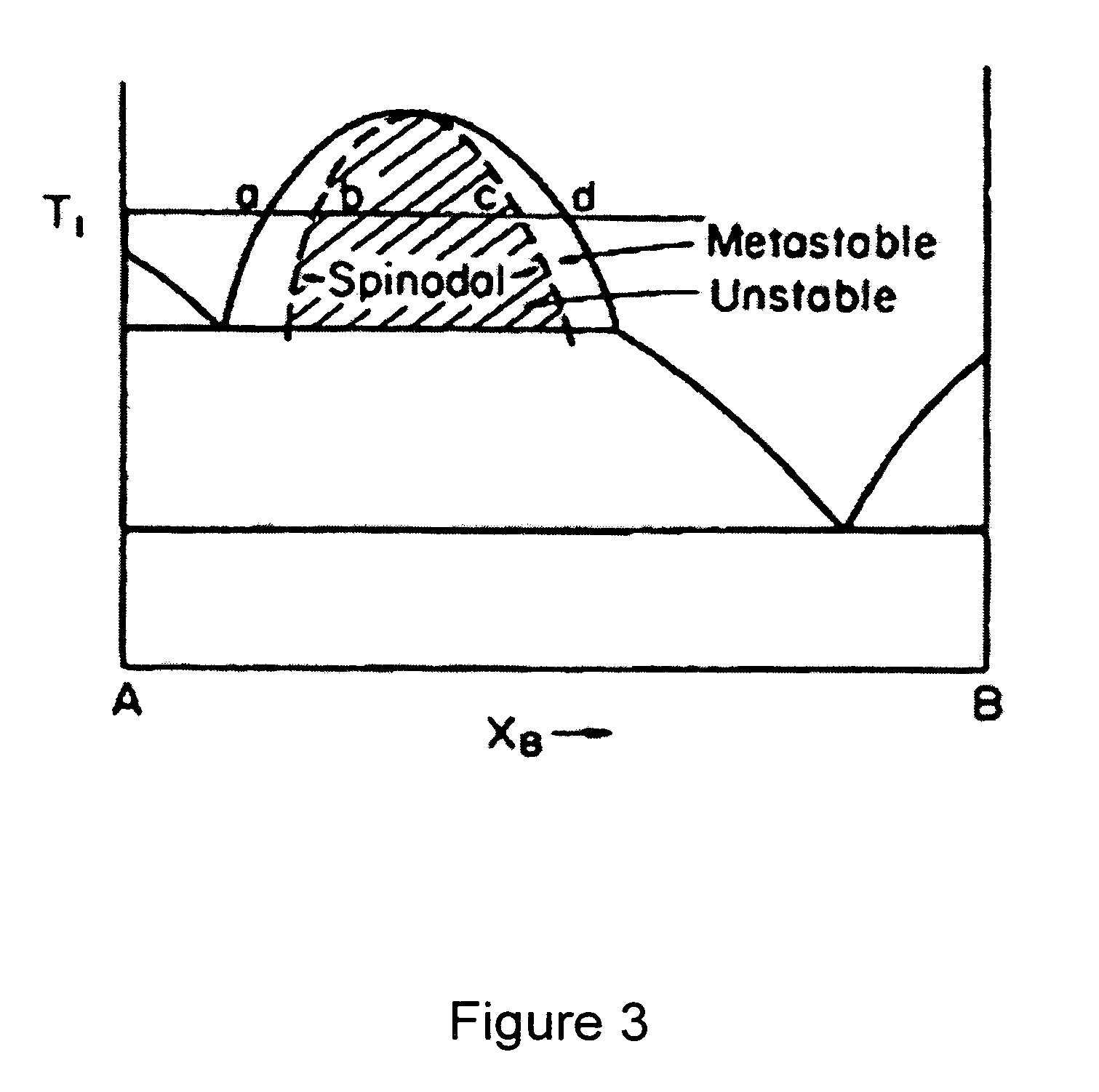Porous calcium phosphate networks for synthetic bone material
- Summary
- Abstract
- Description
- Claims
- Application Information
AI Technical Summary
Benefits of technology
Problems solved by technology
Method used
Image
Examples
Embodiment Construction
[0057] Certain porous hydroxyapatite materials of the present invention are formed using controlled spinodal decomposition. Spinodal decomposition involves a thermodynamic separation of a single-phase liquid into two interconnected, liquid phases having continuous networks. In some embodiments, the ternary CaO—P2O5—FeO system is used. The resulting primary phase will be a mixture of hydroxyapatite (HAp, Ca10(PO4)6(OH)2) and tricalcium phosphate (TCP, Ca3(PO4)2), both of which are calcium phosphates. The secondary phases comprises a removable inorganic porogen, preferably iron oxide, which can be preferentially dissolved and / or removed, leaving a porous, substantially continuously connected structure of HAp and TCP.
[0058] The porosity can be modified by varying the initial composition, specifically by selecting the ratio of inorganic porogen to the other starting components. The pore size can be changed by controlling the time-temperature history, in particular the rate of cooling o...
PUM
 Login to View More
Login to View More Abstract
Description
Claims
Application Information
 Login to View More
Login to View More - R&D
- Intellectual Property
- Life Sciences
- Materials
- Tech Scout
- Unparalleled Data Quality
- Higher Quality Content
- 60% Fewer Hallucinations
Browse by: Latest US Patents, China's latest patents, Technical Efficacy Thesaurus, Application Domain, Technology Topic, Popular Technical Reports.
© 2025 PatSnap. All rights reserved.Legal|Privacy policy|Modern Slavery Act Transparency Statement|Sitemap|About US| Contact US: help@patsnap.com



